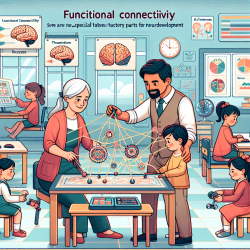Introduction
The COVID-19 pandemic has reshaped the landscape of healthcare, education, and therapy services, prompting a reevaluation of how we approach these fields. As practitioners dedicated to improving child outcomes, it is crucial to ground our practices in evidence-based research. The systematic review "SARS-CoV-2 and the role of close contact in transmission" provides valuable insights into the transmission dynamics of COVID-19, offering opportunities to enhance our therapeutic approaches and safeguard the health of children in our care.
Understanding the Research
The systematic review conducted by Onakpoya et al. (2022) meticulously examines the role of close contact in the transmission of SARS-CoV-2. The review synthesizes data from 278 studies, highlighting that the risk of transmission is significantly higher in household settings compared to other environments. The findings underscore the importance of understanding transmission dynamics to implement effective interventions.
Implications for Practitioners
For practitioners in speech-language pathology and online therapy services, these findings have direct implications:
- Enhanced Safety Protocols: The evidence suggests that close contact in household settings poses a higher risk of transmission. Practitioners should advocate for and implement robust safety protocols, including the use of personal protective equipment (PPE) and maintaining physical distance during in-person sessions.
- Virtual Therapy Options: Given the increased risk in close contact settings, online therapy services, such as those provided by TinyEYE, offer a safer alternative. Virtual platforms not only reduce the risk of transmission but also ensure continuity of care for children.
- Parental Involvement: The review highlights the role of household transmission, emphasizing the need for parental involvement in therapy sessions. Educating parents about safety measures and involving them in the therapeutic process can enhance outcomes and reduce transmission risks.
Encouraging Further Research
While the review provides substantial insights, it also highlights areas requiring further research. Practitioners are encouraged to engage in or support research initiatives that explore:
- Longitudinal Studies: Long-term studies examining the impact of virtual therapy on child outcomes and transmission rates can provide valuable data for refining therapeutic approaches.
- Innovative Interventions: Research into innovative interventions that minimize close contact while maximizing therapeutic efficacy is crucial. Exploring technology-driven solutions and adaptive strategies can lead to safer and more effective practices.
Conclusion
The systematic review on SARS-CoV-2 transmission through close contact offers critical insights for practitioners committed to improving child outcomes. By integrating these findings into practice, we can enhance safety, efficacy, and the overall well-being of the children we serve. As we continue to navigate the challenges posed by the pandemic, let us remain steadfast in our commitment to evidence-based practice and continuous improvement.
To read the original research paper, please follow this link: SARS-CoV-2 and the role of close contact in transmission: a systematic review.










